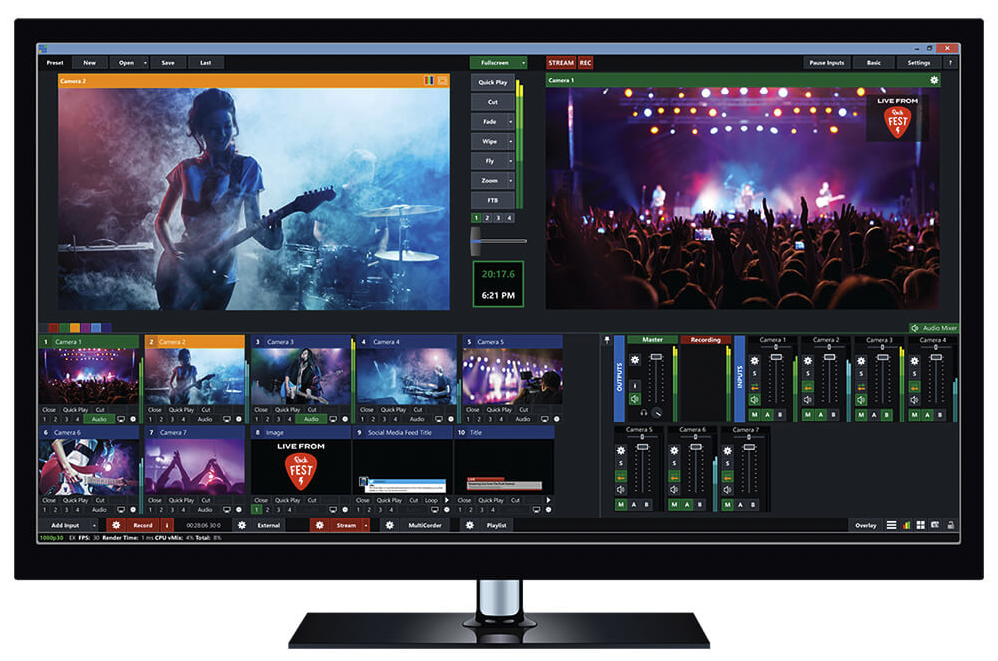Is it possible to watch 3D movies without the need for those pesky 3D glasses?
No, you cannot effectively watch 3D movies without the special 3D glasses.
Without the glasses, the film will appear blurry and doubled, making it difficult to watch and understand the visuals.
The 3D glasses are designed to filter and separate images so each eye sees a slightly different image, creating the illusion of depth and three-dimensional visuals.
Below we look deeper into the technology behind 3D movies, the role of glasses in the viewing experience, and whether there are any alternatives available.
Table of Contents
The Science Behind 3D Movies
Before delving into the question of watching 3D movies without glasses, it is important to understand how 3D movies work.
Traditional 2D movies are displayed on a flat screen, giving viewers a two-dimensional representation of the scene.
On the other hand, 3D movies aim to create a sense of depth and realism by simulating the way our eyes perceive the world in three dimensions.
3D movies achieve this effect by presenting two slightly different images to each eye.
These images are captured using two cameras placed side by side, mimicking the way our eyes perceive the world.
When these images are projected onto a screen, they create the illusion of depth and allow viewers to perceive objects as if they were right in front of them.
The Role of 3D Glasses
Now that we understand the basic principles behind 3D movies, let’s explore the role of 3D glasses in the viewing experience.
The glasses used in 3D cinemas are typically polarized or active shutter glasses.
Polarized Glasses
Polarized glasses work by filtering light waves so that each eye sees a different image.
The glasses have lenses with different polarizing filters, allowing only specific light waves to pass through.
One lens allows vertical light waves to pass through, while the other lens allows only horizontal light waves.
This separation ensures that each eye receives a different image, creating the illusion of depth.
Active Shutter Glasses
Active shutter glasses, on the other hand, use a different technology to achieve the 3D effect.
These glasses work in synchronization with the display, rapidly alternating between blocking the left and right eye.
The display itself also alternates between showing the left and right images.
This rapid switching happens so quickly that it is imperceptible to the human eye, creating the illusion of a 3D image.
Alternatives to 3D Glasses
While 3D glasses have been the standard for watching 3D movies in cinemas, there have been efforts to develop alternatives that eliminate the need for glasses altogether.
Let’s explore some of these alternatives:
Glasses-Free 3D Displays
One promising alternative is the development of glasses-free 3D displays.
These displays use a variety of technologies, such as lenticular lenses or parallax barriers, to direct different images to each eye without the need for glasses.
However, glasses-free 3D displays are still relatively new and have some limitations.
The viewing angle is often restricted, meaning that viewers need to be positioned in a specific spot to experience the 3D effect.
Additionally, the quality of the 3D effect may vary depending on the display and the content being viewed.
Autostereoscopic Displays
Autostereoscopic displays are another type of glasses-free 3D technology that has gained attention in recent years.
These displays use a combination of lenses and mirrors to direct different images to each eye.
Autostereoscopic displays can provide a wider viewing angle compared to other glasses-free technologies, allowing multiple viewers to experience the 3D effect simultaneously.
However, like other glasses-free alternatives, autostereoscopic displays still face challenges in terms of cost, complexity, and the need for specific viewing conditions.
FAQs – Can You Watch 3D Movies Without Glasses?
1. Is it possible to watch 3D movies without glasses?
No, currently, glasses are necessary to watch 3D movies in most cases.
The technology behind 3D movies relies on presenting different images to each eye, and glasses ensure that each eye receives the correct image.
2. Are there any alternatives to 3D glasses?
Yes, there are ongoing developments in glasses-free 3D display technologies that aim to eliminate the need for glasses.
These alternatives include glasses-free 3D displays and autostereoscopic displays.
3. How do glasses-free 3D displays work?
Glasses-free 3D displays use technologies such as lenticular lenses or parallax barriers to direct different images to each eye without the need for glasses.
However, these displays often have limitations in terms of viewing angle and image quality.
4. What are autostereoscopic displays?
Autostereoscopic displays are a type of glasses-free 3D technology that uses a combination of lenses and mirrors to direct different images to each eye.
They offer a wider viewing angle compared to other glasses-free technologies.
5. Can multiple people watch 3D movies on glasses-free displays simultaneously?
Yes, autostereoscopic displays, in particular, can provide a wider viewing angle, allowing multiple viewers to experience the 3D effect simultaneously.
6. Do glasses-free 3D displays have any limitations?
Yes, glasses-free 3D displays often have limitations such as restricted viewing angles and variations in the quality of the 3D effect depending on the display and content being viewed.
7. Are glasses-free 3D displays widely available?
Glasses-free 3D displays are still relatively new and not as widely available as traditional 3D displays with glasses.
However, they are gaining attention and may become more prevalent in the future.
8. Can I convert a regular 2D movie into a 3D movie without glasses?
While there are software tools available that claim to convert 2D movies into 3D, the results may not be as effective as watching a true 3D movie.
These conversions often lack the depth and realism that is achieved through the use of specialized cameras and filming techniques.
9. Are there any health concerns associated with watching 3D movies with glasses?
For most people, watching 3D movies with glasses does not pose any significant health concerns.
However, some individuals may experience discomfort or eyestrain after prolonged periods of 3D viewing.
It is recommended to take breaks and limit the duration of 3D movie sessions.
10. Will glasses-free 3D displays completely replace glasses in the future?
While glasses-free 3D displays show promise, it is difficult to predict whether they will completely replace glasses in the future.
The technology still has some limitations to overcome, and the widespread adoption of new display technologies can take time.
As technology continues to advance, the possibility of watching 3D movies without glasses becomes more feasible.
However, for now, glasses remain an integral part of the 3D movie experience, providing viewers with a more immersive and realistic visual experience.
Summary – Can You Watch 3D Movies Without Glasses?
While the idea of watching 3D movies without glasses may seem appealing, the current reality is that glasses are still necessary for most 3D viewing experiences.
The technology behind 3D movies relies on presenting different images to each eye, and glasses play a crucial role in ensuring that each eye receives the correct image.
However, there are ongoing developments in glasses-free 3D display technologies that aim to eliminate the need for glasses in the future.
These alternatives, such as glasses-free 3D displays and autostereoscopic displays, offer promising possibilities but still have some limitations to overcome.


